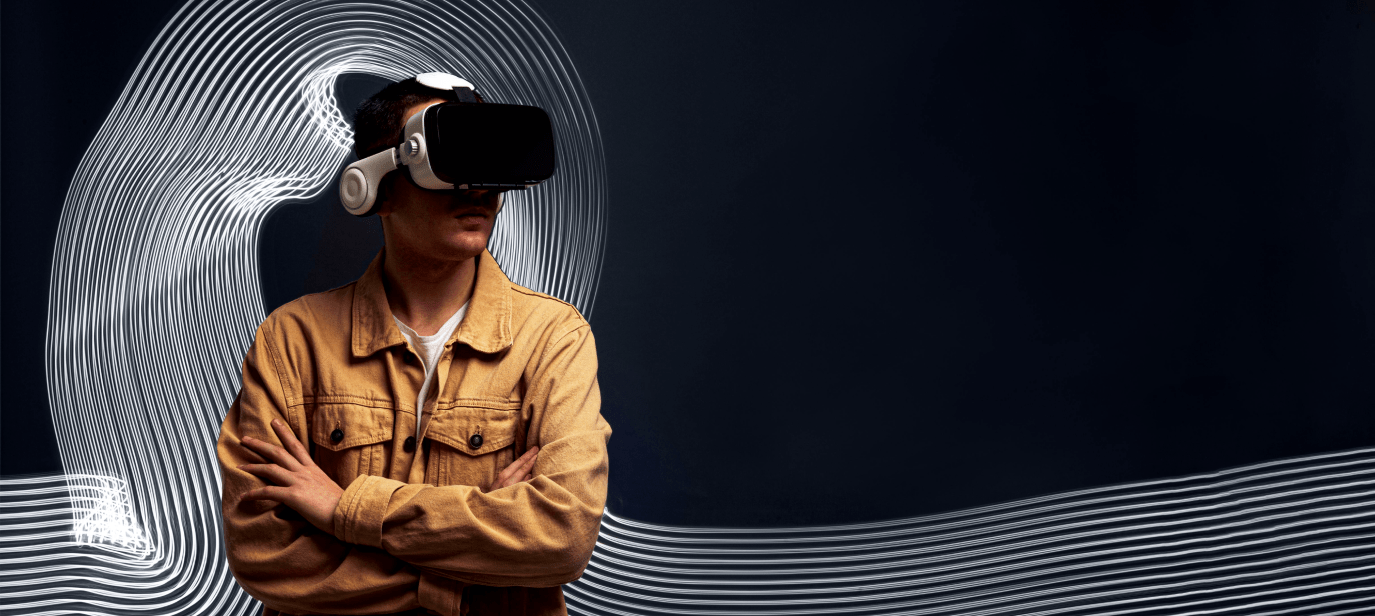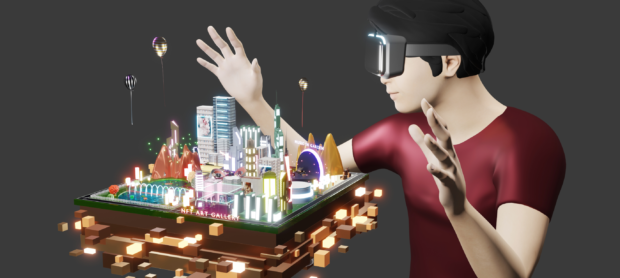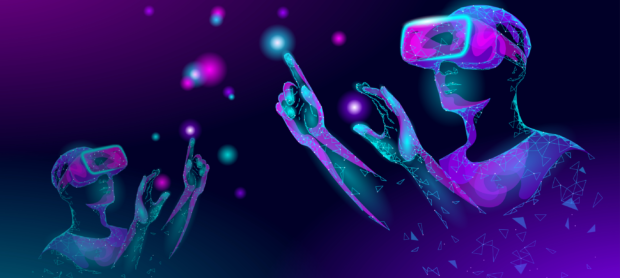Envision a realm where you are instantaneously transported to far-flung, exotic locales through a mere digital gesture or acquire newfound competencies via hands-on, vividly immersive experiences. No longer relegated to the realm of pure fantasy, this world is progressively materializing as Augmented Reality (AR) and Virtual Reality (VR) technologies forge ahead.
AR and VR are redefining our engagement with both the tangible realm and virtual content. Juxtaposing digital elements onto the physical world, Augmented Reality expands our perceptual horizons, whereas Virtual Reality engenders all-encompassing, computer-simulated environments. A panoply of sectors—spanning gaming and entertainment to healthcare and education—witnesses the inexorable infiltration of these groundbreaking technologies.
The surging prominence of AR and VR is underscored by the burgeoning market and the torrential influx of investments earmarked for research and development. Titans of the tech world, in tandem with ambitious startups, vie to materialize cutting-edge products and applications, harboring aspirations to revamp our quotidian routines, professional pursuits, and leisurely endeavors. Given the wealth of transformative possibilities within our grasp, delving into the emergent trends and applications of AR and VR—those harbingers of radical metamorphosis—becomes indispensable.
Evolution of AR and VR Technologies
Historical background
The idea of AR and VR has been around since the early 20th century, but the first applications started to appear in the 1960s. Ivan Sutherland and Bob Sproull created the first head-mounted display (HMD) in 1968 under the name “Sword of Damocles.” Although crude, it prepared the way for later AR and VR technology. While working on a Boeing project, researcher Tom Caudell created the phrase “augmented reality” in 1990. With the creation of the first consumer VR headset, the Virtuality system, and the introduction of ARKit, an open-source AR library, AR and VR technology advanced throughout the 1990s.
The sophistication of AR and VR gadgets has increased as technology has advanced. The introduction of smartphones with in-built gyroscopes and accelerometers cleared the path for mobile augmented reality apps like Pokémon Go. Palmer Luckey created the revolutionary virtual reality device Oculus Rift in 2010, and Facebook eventually bought the company. With the entry of tech behemoths like Google, HTC, and Sony not long after, this turning point heralded a new age for VR.
The condition of AR and VR at the moment
The use of these technologies is now widespread in many different industries. Games offering immersive experiences, such as Beat Saber, Half-Life: Alyx, and Superhot VR, have captured gamers’ attention. Users may now engage in virtual places thanks to social VR apps like VRChat and Rec Room. Tools in the AR space, such as Ikea Place and Snapchat filters, have lowered the barrier of entry for regular users.
The market for AR/VR has grown significantly, and predictions indicate that it will reach $72.8 billion by 2024. Increased investment from large corporations, such as Facebook’s $2 billion purchase of Oculus and Apple’s suspected development of an AR headset, is what’s fueling this rise. Additionally, the growth of the business has been further fueled by venture money drawn by the success of AR and VR firms like Magic Leap and Niantic. The potential for AR and VR to transform our environment is becoming more and more apparent as technology develops and new applications emerge.

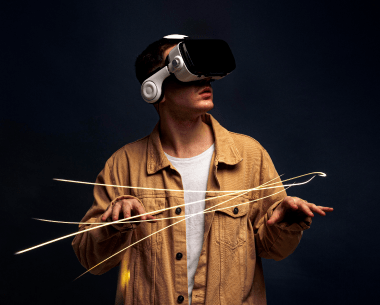
Future Trends
Hardware improvements
Lightweight wearables and headsets: The devices should becoming more comfortable and available as AR and VR technologies advance. Headsets will develop into thin, fashionable wearables that do not have the bulk of existing gadgets. The advent of daily usage made possible by this shrinking will increase the attraction of AR and VR to a larger demographic. Improved battery life and processing speed: Significant processing speed and battery life improvements will be made in future AR and VR devices. Longer use times, improved portability, and more complicated applications will all be made possible by these enhancements. Users may anticipate a smooth and immersive experience when advances in graphics rendering are combined.
Software advancements
Improved interaction and realism: Users will be able to interact with digital information in new and exciting ways thanks to AR and VR software, which will push the frontiers of realism and engagement. Virtual environments will become more sensitive and realistic as a result of developments in haptic feedback, 3D audio, and real-time rendering, obfuscating the distinction between the virtual and actual worlds. Integration of AI: Future AR and VR application development will be greatly aided by AI, which will allow for more intelligent and individualized interactions with digital information. AR and VR systems may adapt to user preferences, behaviors, and surroundings by using machine learning algorithms, producing custom experiences that improve immersion and engagement.
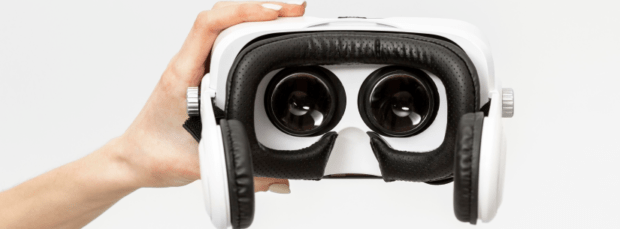
Infrastructure and connectivity
5G and beyond: Because 5G networks will offer the low latency and high bandwidth needed for real-time, data-intensive applications, they will have a big influence on AR and VR technology. Experiences using AR and VR will become more seamless as network infrastructure develops, opening the door for widespread use across several sectors.
A metaverse: Within the AR and VR communities, the idea of the metaverse—a permanent, linked virtual universe—is gaining popularity. Users will be able to communicate, engage, and work across various virtual locations thanks to this digital ecosystem, opening up new possibilities for leisure, business, and social contact.
Trends unique to each industry
Playing games and having fun
With more immersive and engaging experiences than ever before, augmented reality and virtual reality technologies will continue to alter gaming and entertainment. Expect to see improvements in cross-platform gameplay, multi-sensory input, and cloud-based gaming services that serve a variety of users.
Training and education
With immersive simulations and virtual classrooms providing new learning possibilities, AR and VR have the potential to completely alter education and training. Regardless of where they are in the world, these technologies will make it possible for professionals and students to learn new skills via practical application.
Healthcare
Applications for augmented reality (AR) and virtual reality (VR) in healthcare will keep growing, with telemedicine, remote surgery, and virtual reality exposure treatment leading the way. These technologies will close the gap between real and virtual healthcare services, allowing medical personnel to better assist and care for patients.

Retail and online shopping
Retail and e-commerce will be transformed by AR and VR, which will provide consumers individualized, immersive purchasing experiences. These technologies will provide companies the ability to communicate with their consumers in brand-new and creative ways via virtual try-ons, product visualizations, and interactive showrooms.
Tourism and travel
By providing virtual tours, augmented reality-enhanced exploration, and immersive cultural encounters, augmented reality and virtual reality technology will improve the travel and tourism sectors. These developments will make it possible for tourists to discover new places and interact with local cultures in novel ways, stimulating industrial growth and innovation.
Ethical Considerations and Challenges
Security and privacy
Privacy and security issues will become more and more of a worry as AR and VR technology spread. If personal data collection is not adequately handled, there are considerable concerns involved, including the acquisition of biometric data and user behavior. Maintaining user trust and avoiding illegal access to sensitive information will depend on having reliable data protection rules and secure systems.
Accessibility and the digital divide
The fast development of AR and VR technologies might widen the digital divide and penalize people who cannot use them. Governments, corporations, and non-governmental organizations must work together to promote accessible, inexpensive technology and encourage digital literacy among underserved groups if this problem is to be solved. This will make sure that the advantages of AR and VR are distributed fairly rather than highlighting current disparities.
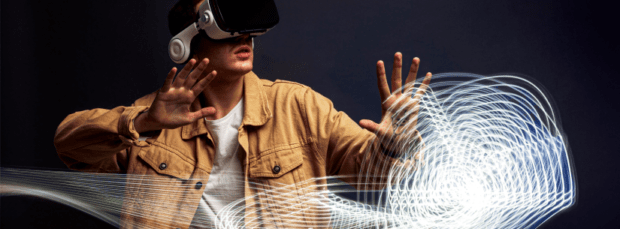
Issues with one’s physical and mental health
use AR and VR experiences are so engrossing, there are worries about possible hazards to users’ mental and physical health. Long-term usage of these devices may have negative psychological impacts, such as addiction and social isolation. Furthermore, when using AR and VR apps, users may feel uncomfortable, lightheaded, or even hurt physically. For developers, politicians, and healthcare experts, striking a balance between the advantages of new technologies and the need to safeguard users’ welfare will be a major problem.
Legal and governmental matters
Legal and regulatory frameworks will need to change as AR and VR technology advance to meet new issues. Just a few of the problems that can come up include intellectual property rights, content control, and responsibility for mishaps or injuries brought on by AR and VR experiences. Collaboration between industry stakeholders, legislators, and regulators will be necessary to navigate these issues and make sure that the regulations regulating AR and VR technologies are both effective and flexible.
Conclusion
Undoubtedly, the realm of AR and VR teems with captivating trends and potential applications, as we’ve delved into within this composition. Encompassing enhancements in hardware and software, the metamorphosis of the metaverse, and the growth of industry-specific solutions, these prospects span a vast spectrum. A veritable revolution in domains such as gaming, education, healthcare, and travel, these technological advancements are poised to transform our lives, labor, and leisure. Without a question, AR and VR have a bright future, and innovation is continuing at a rapid clip. We should interact with these advancements as a society since they will surely have a major impact on how our world is shaped in the years to come.
Are you prepared to make your AR or VR concept a reality? Eventyr is here to assist you in making it happen. We can provide the knowledge and assistance necessary to transform your idea into a successful project when our highly skilled professional staff is working under your direction. Don’t be afraid to contact us if you want more details, and start exploring AR and VR right now.
